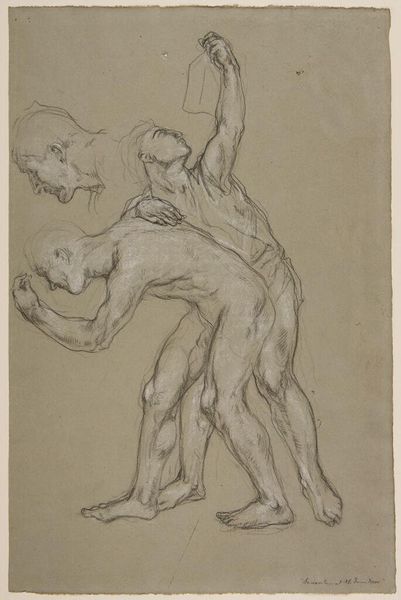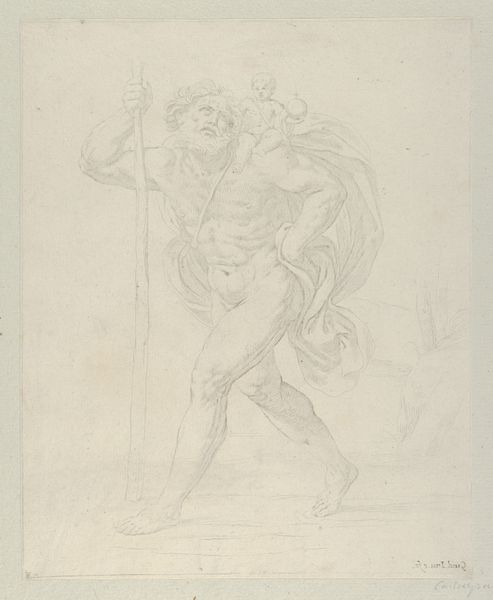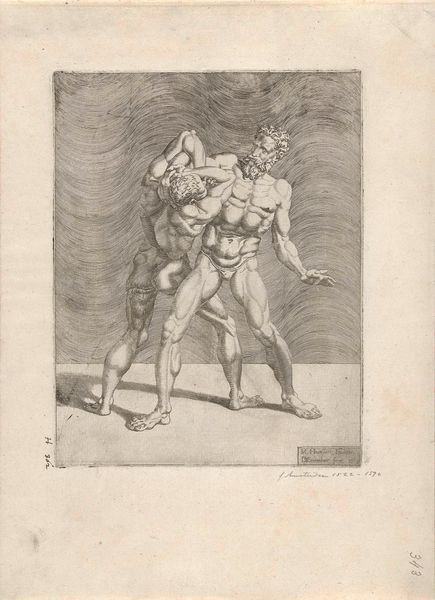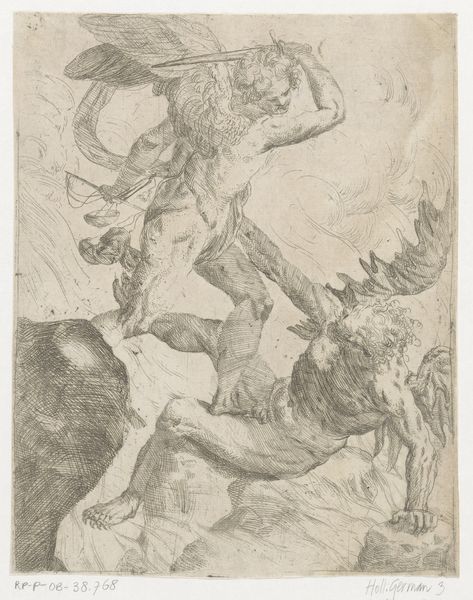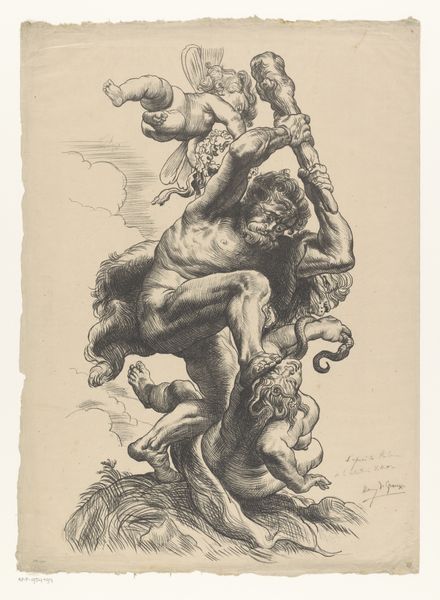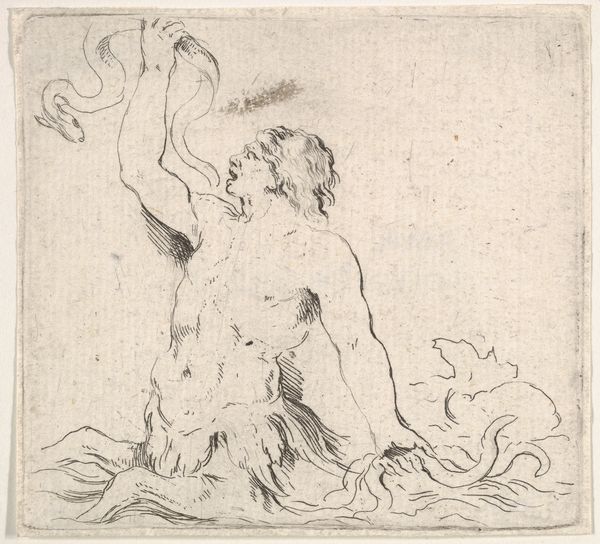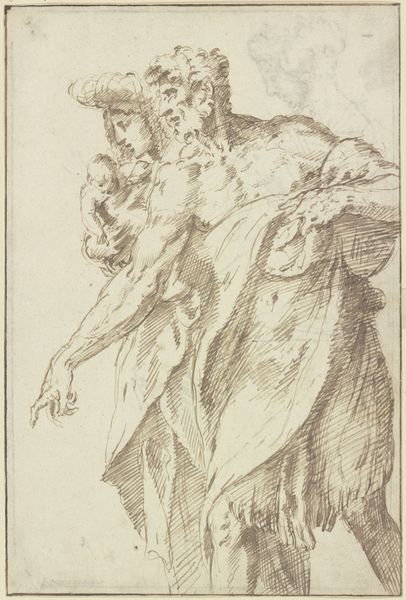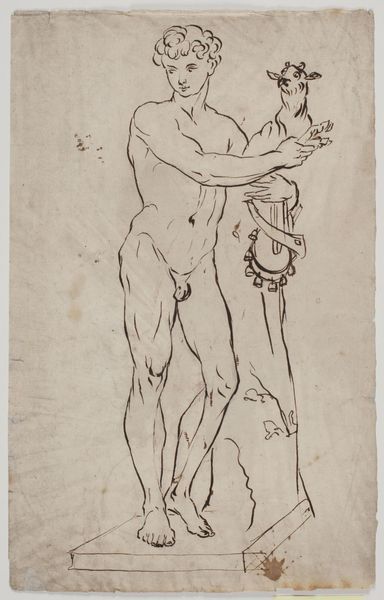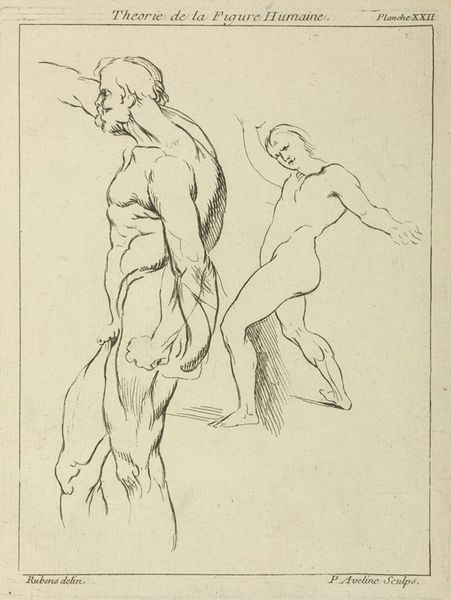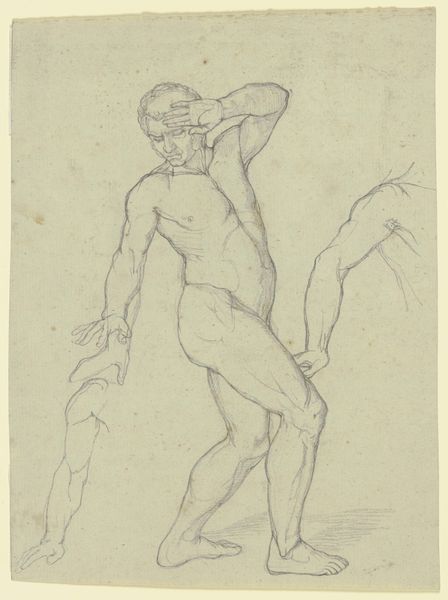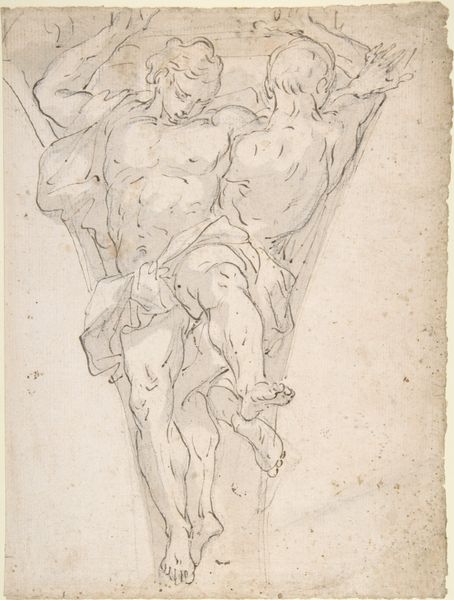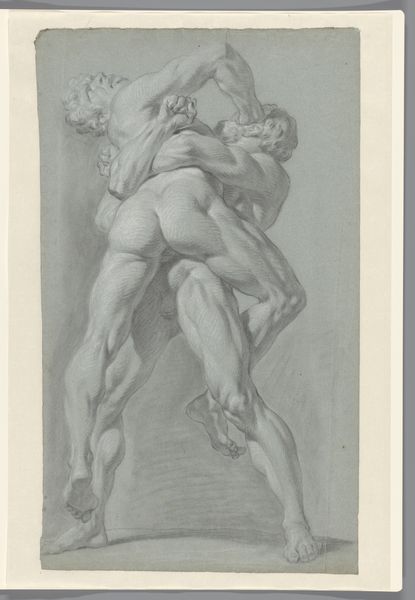
drawing, pencil, graphite
#
portrait
#
drawing
#
neoclacissism
#
pencil sketch
#
classical-realism
#
figuration
#
form
#
pencil
#
graphite
#
pencil work
#
history-painting
#
academic-art
Dimensions: height 565 mm, width 337 mm
Copyright: Rijks Museum: Open Domain
Editor: Here we have Johannes Tavenraat's "Academiestudie naar gips van Laocoön," made sometime between 1819 and 1881. It's a graphite drawing of the famous Laocoön sculpture. What immediately strikes me is the raw emotion captured, even in a sketch. What do you see in this piece? Curator: It’s fascinating to consider what the Laocoön represents here. The original sculpture embodies human suffering and divine retribution. Tavenraat’s study, though, filters this through an academic lens. Notice the meticulous rendering of the musculature, almost clinical. Does this distance soften the original horror, turning it into a display of skill and understanding of form, almost divorced from the original agony? Editor: That’s interesting – it's like he’s dissecting the emotion, examining its anatomy rather than experiencing it. Curator: Exactly! And think about the context: the 19th-century academy valued classical ideals – balance, harmony, order. But is that truly what the Laocoön represents? Perhaps, by focusing on the physical form, they’re attempting to tame the chaos of the original narrative. Does this sanitization serve a purpose, or does it dilute the emotional impact of the story? Editor: So, it’s less about the story of Laocoön and more about mastering artistic technique and classical ideals? Curator: In part, yes. However, even a study of form can’t entirely erase the memory of the myth. Look at the tension in the lines, the struggle etched into the faces. There’s a residue of that original terror still clinging to the image, wouldn't you agree? It highlights a continuous cultural engagement with trauma and how societies choose to remember and represent suffering. Editor: That's a good point. I hadn’t thought about it in terms of cultural memory. Thanks, that gives me a lot to consider! Curator: It's a piece that rewards contemplation. The layers of meaning, both intended and unintentional, speak volumes about the enduring power of classical imagery and its continuing relevance.
Comments
No comments
Be the first to comment and join the conversation on the ultimate creative platform.


